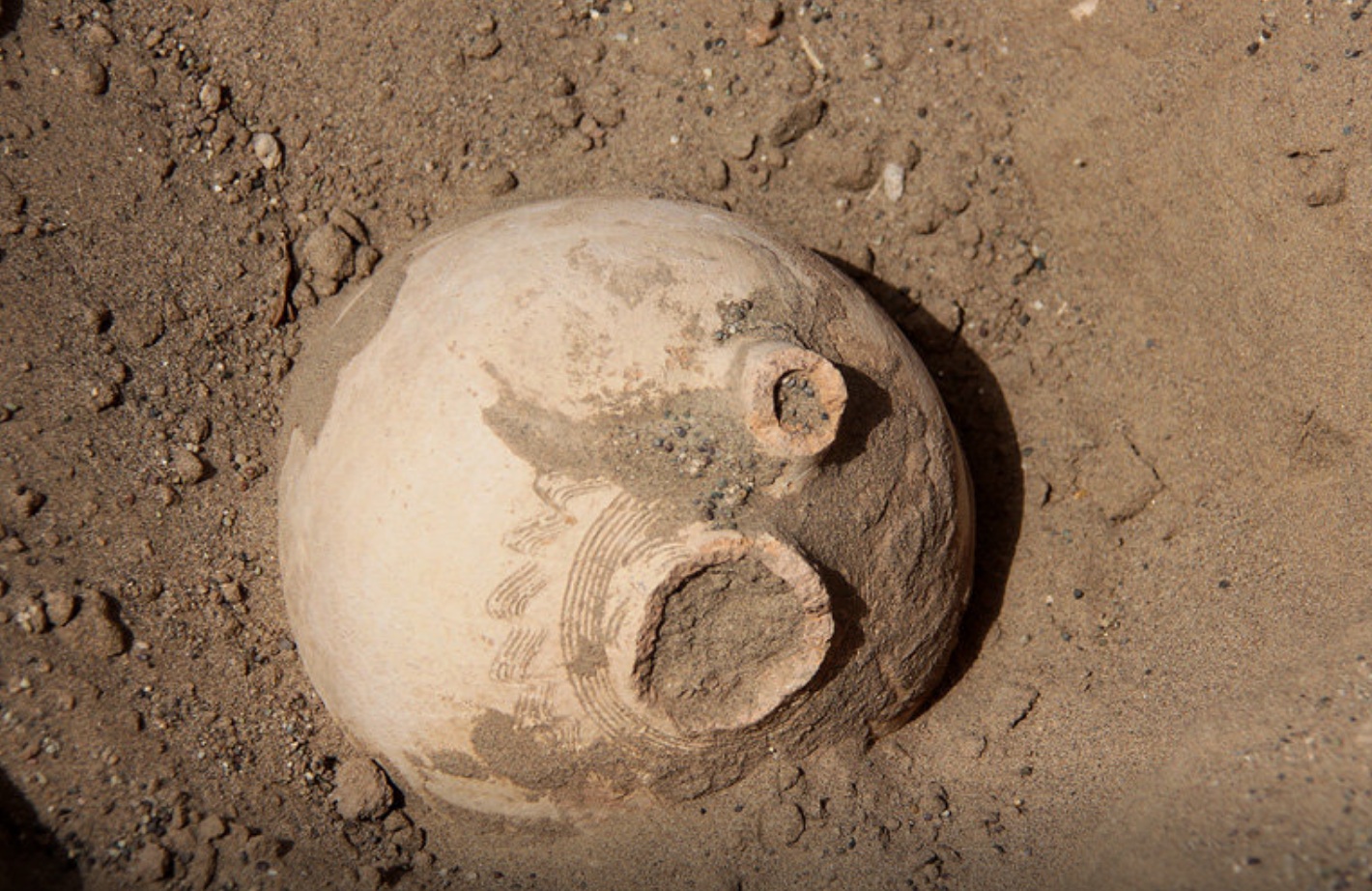The Iran FrontPage News Outlet reported on April 5, 2017 of a remarkable archaeological find as a result of severe sandstorm. As noted in the report:
” A strong sand storm in Kerman province in southern Iran has led to the discovery of a lost ancient city full of historical relics. The sand storm unearthed a large part of an ancient city in Negin-e Kavir County near the city of Fahraj in Kerman province.
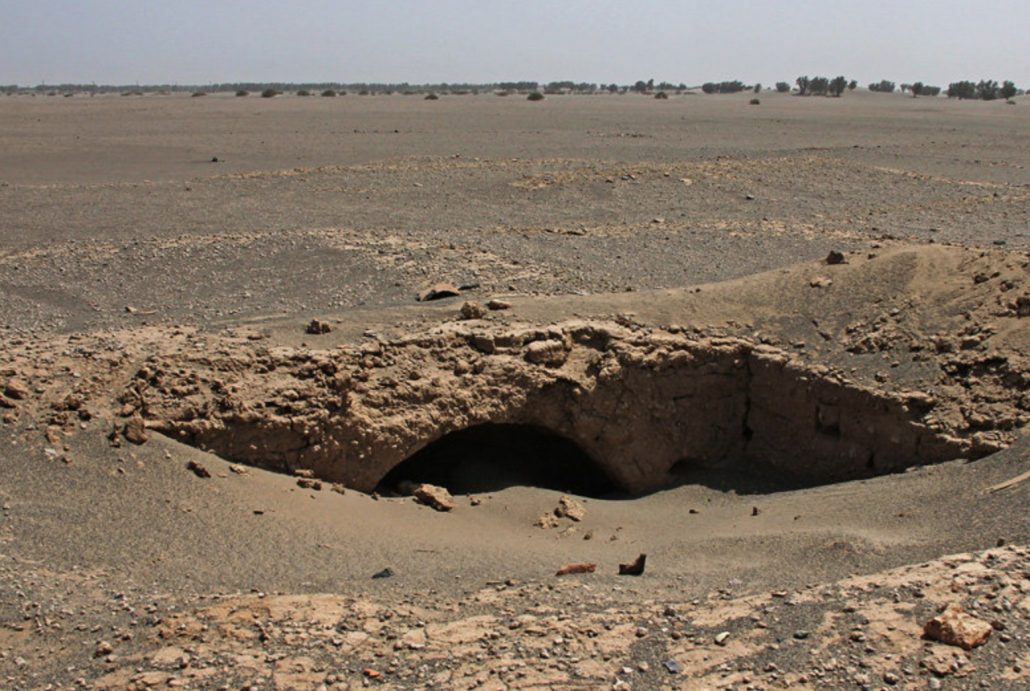
Exposed remains of a building structure (Photo: Laleh Khajooei, Mehr News Agency); note top portion of an archway leading towards a chamber or hallway. The archway appears to be based on Sassanian systems.
Approximately 5,000 square meters (53,820 square feet) of this site (including relics) have been identified at Negin Kavir country.
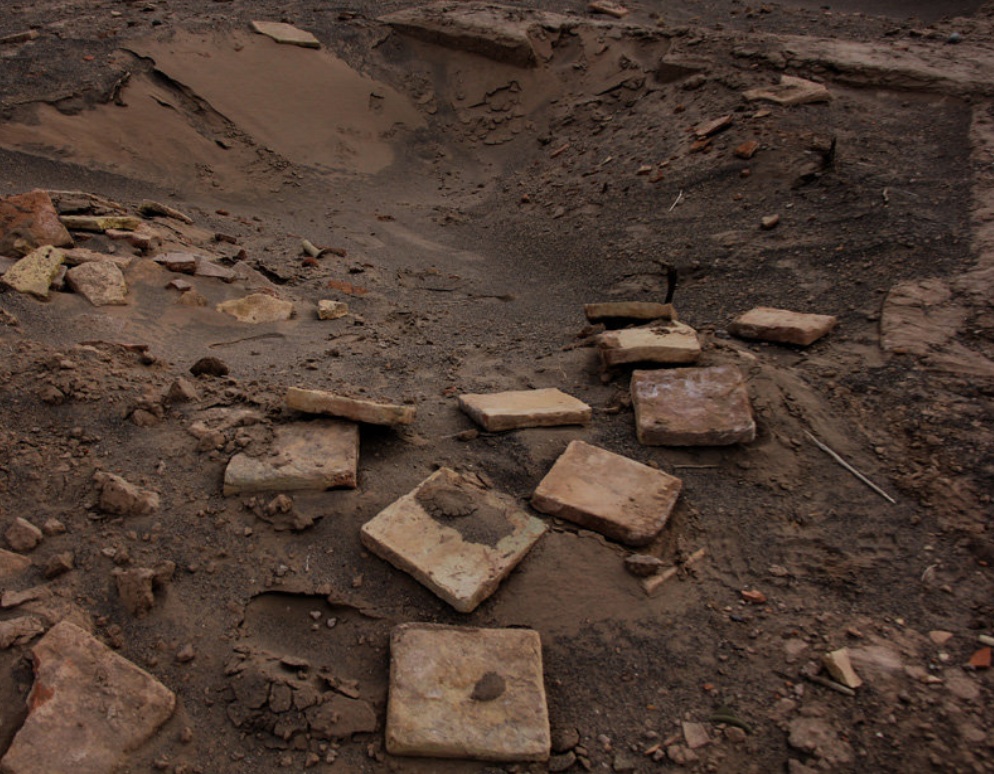
Remains of tile-type flooring of a building structure near Fahraj (Photo: Laleh Khajooei, Mehr News Agency).
The remains may alternatively be that of an ancient necropolis, but further studies are needed to fully ascertain the function of the site (i.e. whether it was a city, necropolis, etc.).
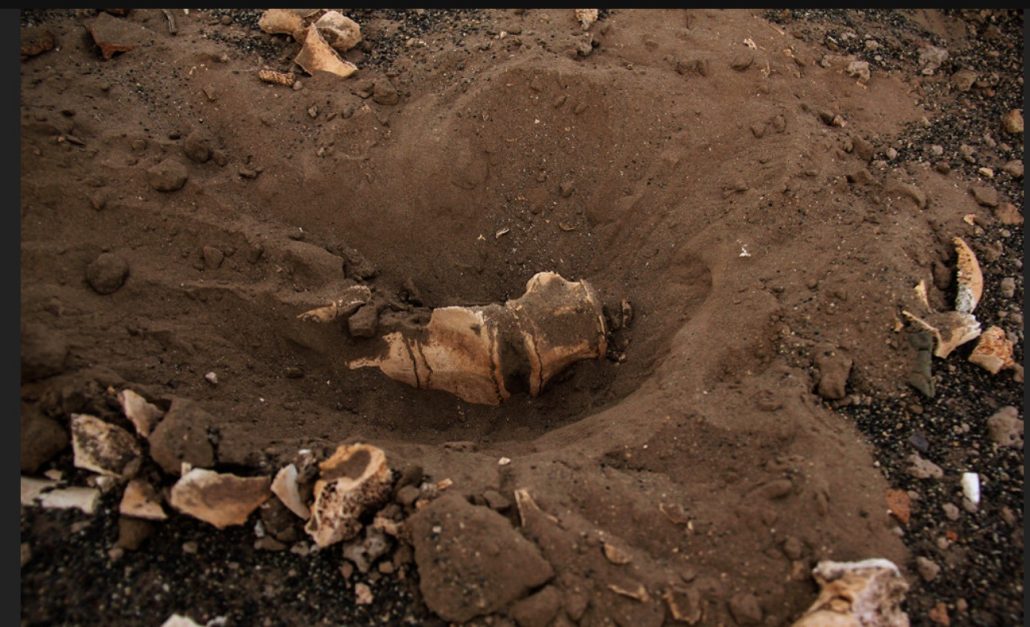
Human remains unearthed near Fahraj (Photo: Laleh Khajooei, Mehr News Agency).
As noted by Mohammad Vafaei (Cultural Heritage, Handicrafts and Tourism Organization) to the Tehran Times (April 9, 2017):
“A team of archaeologists has been dispatched to Fahraj in order to determine whether the site used to be a necropolis or an inhabitance …”
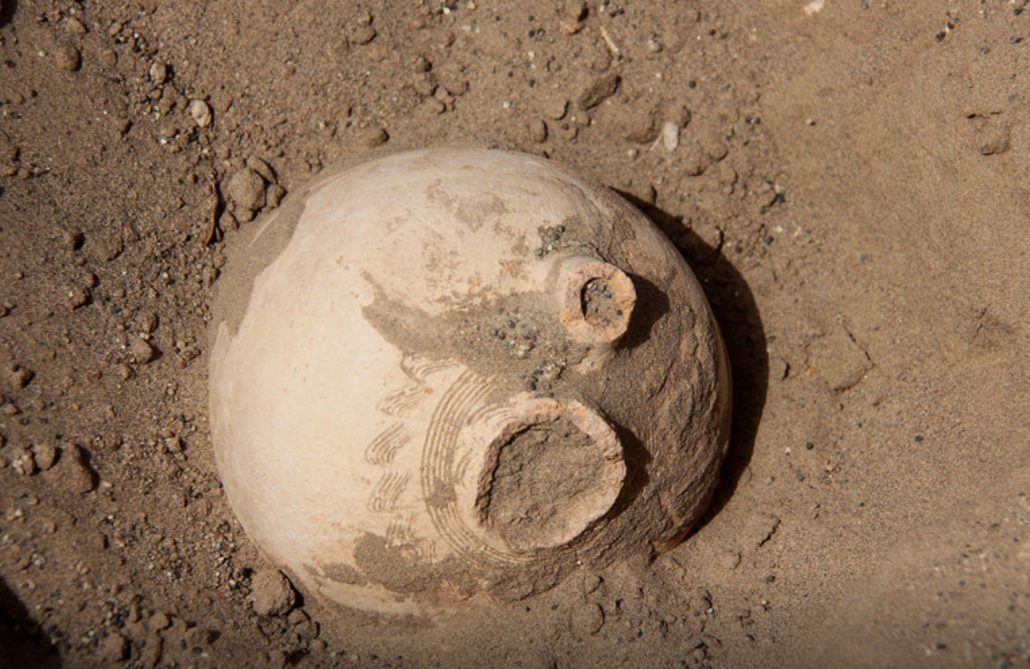
A sample of pottery unearthed as a result of the storms near Fahraj (Photo: Laleh Khajooei, Mehr News Agency).
As noted by the Archaeology News network (April 6, 2017):
“Clay relics, bones, and brick walls have been discovered in the historical site. Further archeological investigations will be carried out to discover more about the city.”
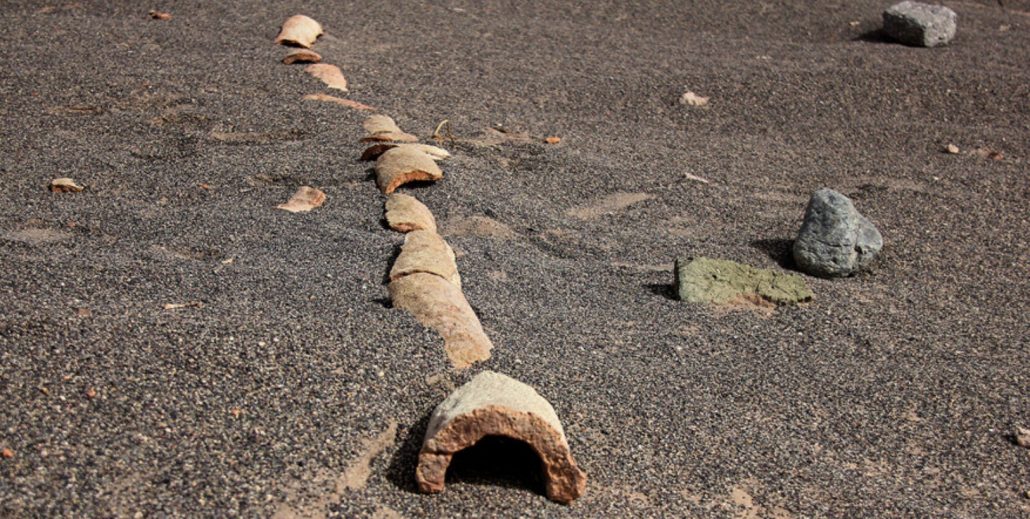
Remains of a piping system exposed near Fahraj (Photo: Laleh Khajooei, Mehr News Agency).
As cautioned by Mohammad Vafaei in the Ancient Origins website:
“One cannot claim that an area is historical as soon as several objects appear from under the ground after storms and floods, since they might have been carried from other regions by water or storm.”
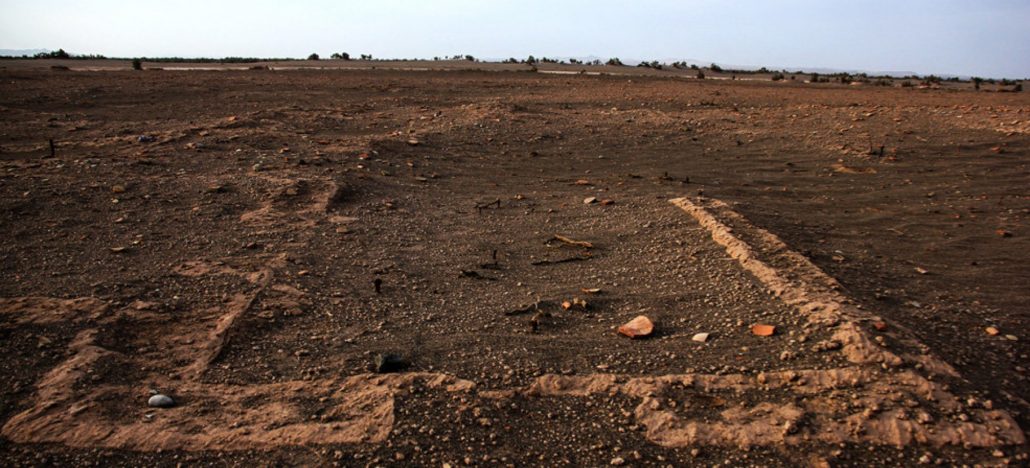
Wall foundations remains of an architectural structure near Fahraj (Photo: Laleh Khajooei, Mehr News Agency).
Initial analyses by archaeologists suggest that this site may be sometime in the early post-Sassanian era (around the early 660s CE) to the early Safavid era (c. early 1500s), however, this site may indeed be very much older. By the same token, the authorities and especially specialists are advising caution until full studies are completed. As noted by the Tehran Times (April 9, 2017):
“Big, sprawling Kerman Province is something of a cultural melting pot, blending various regional cultures over the course of time. It is also home to rich tourist spots and historical sites including bazaars, mosques, caravanserais and ruins of ancient urban areas.”
It would be pertinent for the authorities to allow further investigations into the field to allow for the production of more data leading to scholarly papers and textbooks, not just for the find at Kerman province, but all of southern and central Iran.

